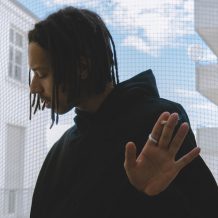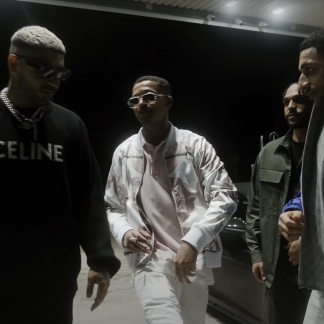just music videos, right? Cyrille Phipps and I studied together in the Master of Arts in Media Studies program at the New School for Social Research. Cyrillle is a native of the Bronx, home of hiphop, and has a really deep connection to the music. And like me, she can remember the first time she heard “Rapper’s Delight” on the radio. (Yo, can you say OLD school?) We met one Sunday morning in a Brooklyn cafe to discuss images of black women in hip hop videos, and believe me when I say that the following barely scratches the surface of a very complex issue.
Inez: You gave me a copy of a documentary you made about images of black women in hiphop videos called “Respect is Due.” When did you make this?
Cyrille: 1992. After I graduated from Syracuse University with a Bachelor of Fine Arts in Film, I went to work for a group called Rising Shine Productions–an educational media company. We went into the public schools and taught media, incorporating it into english, science and math, etc. So I was working with a lot of kids at the height of rap music. It was right at the tail end of rap being about fun and being about politics and going into the beginning of gangsta rap. At this time, around 1992, I went to work for a group called Classic Concept Productions. They were one of the primary organizations producing music videos for black artists. Working with kids in schools, and then working on and watching music videos created a really complicated situation for me. I mean, this was what I trained to do for a living, but there were all of these half-naked women hanging all over the stars, and it was clear that these images were making an impact on the kids I was working with in the schools.
Inez: But don’t you think that images of women in media in general, not just hip hop videos, are problematic? I mean sex sells everything in the U.S.
Cyrille: Of course. And it’s also true that hip hop artists are attacked more than others for their sexism. I mean most of the stuff hip hop artists sample comes from what they see in Hollywood culture. In the 80’s everyone wanted to be like “Dynasty” or “Dallas.” And now everyone wants to live a lifestyle duplicated in mainstream media.
Inez: Okay, that being said, let’s back away from mainstream society and focus on the hip hop community. In your video Sister Souljah says that only have music videos changed dramatically since you made “Respect is Due,” but they have become an integral part of the media landscape. Do you think her statement is still valid, or do you think that kids today are more savvy and understand that what they see on TV is just people making money and that these videos do not reflect reality?
Cyrille: When I was working with young people in the schools, I saw that kids were definitely reproducing the behavior they saw on TV. A boy would try to talk to a girl the same way he saw his favorite MC do it in the video and the girls were behaving the same way they saw the women on TV behave. On the other hand, I think kids today understand that there are artists who are very much invested in a ghetto mentality. Take Puffy, for example. He’s never lived the ghetto life he would have people believe, but is invested in it because it makes him a millionaire. Jay-Z, who does have a ghetto background, doesn’t live in the Brooklyn housing project where he grew up, but in the Hamptons. And he’s not going to rap about the Hamptons because not even the kids in the suburbs want to hear about that. So yes. I think kids today recognize that, and to that extent are definitely media savvy. But the thing about media is that it can be used to develop critical thinking skills, and it can also be used, as we know, to dull the brain.
Inez: I’ve seen some pretty scary videos recently, some seemed to border on pornographic. And if it were simply a question of artistic freedom it would be one thing. If I thought that hip hop artists were telling their record labels, “Yo, I’m seeing my new video in my head. . . and it’s me surrounded by many naked women. . . preferably light-skinned honeys with big butts and long hair.” But I think it’s really driven by marketing and the images that labels try to establish for their particular artists. So it is, in fact, industry practice to use black women as sex objects to help sell music. And black people line up to give the record companies (and the artists, of course) their money and then complain about how they are portrayed in U.S. media.
Cyrille: I think it’s interesting that you say that. Because as much as we blame the industry for the images they create, it’s our responsibility as a culture to say “this is not appropriate,” and we haven’t been doing that. ‚
Inez: You know, part of me thinks that it really doesn’t matter what these guys do in their videos. There’s a bigger problem here and that’s the limited representation of black women in media. Because images of black women are limited to a few well-worn stereotypes, the images prevalent in hip hop culture (and this includes those offered by female artists like Little Kim and Foxy Brown among others) take on a greater importance than they are perhaps worth. I suppose in a perfect world it wouldn’t matter what the babes in the video were doing because you could simply flip the channel and see other images which come closer to capturing the reality of black women in our society.
Unfortunately, this world is far from perfect.
Holla back at globalgirlie@hotmail.com















